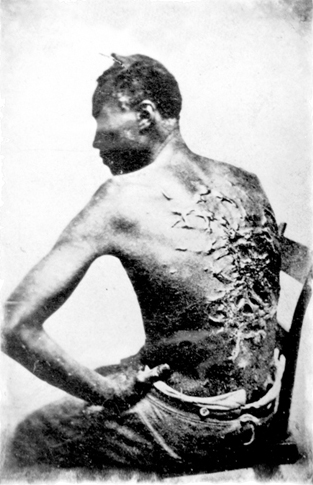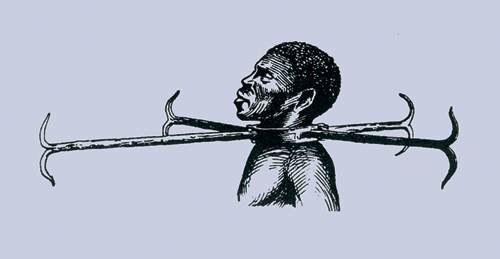It is the early 1860s. Slavery is legal in the United States. Brave slaves try to escape to freedom along the secret Underground Railroad, but they don't always make it. What would you do? Would you help protect the slaves from the slave catchers? Or would you follow the law?

Image Credit: Enslow Publishers, Inc.
By the early 1800s, slavery was abolished in all states north of the border of Pennsylvania and Maryland. Trouble was growing between the slave owners of the South and the abolitionists of the North.
The United States of America. Today this country stands for freedom. But that was not always so. From the early 1600s until 1865, slavery was legal in parts of the country.
Most slaves lives were brutal. Many worked in the fields from sun up to sun down. It was often backbreaking work. Slaves who slowed down might be harshly whipped. Most slaves were poorly fed and clothed. They often lived in broken down shacks. These homes were cold in the winter and hot in the summer.
For many slaves, there was no way out. Escaping alone was difficult and dangerous. Owners hired slave catchers to catch them. They used dogs to hunt runaways down. Returned slaves were brutally punished as an example to others. They might be nearly whipped to death or tortured. Sometimes, they were put in uncomfortable chains. They also might be branded with a hot iron. Owners branded them with the letter R for returned slave.

Image Credit: Library of Congress
Whippings left slaves brutally scarred or dead.

Image Credit: Library of Congress
The neck ring was used as a punishment for running away.

Image Credit: Library of Congress
Slave hunters often used bloodhounds to track down and chase slaves.
What would you do if you were a slave?
- Would you try to escape? Would you know where to run? Or...
- Would you stay where you are? Running away without help might be even more deadly than slavery.
What really happened...
Some slaves escaped on their own. They took a chance. In time, more slaves learned about another choice. It was known as the Underground Railroad.
The Underground Railroad was not a real railroad. It wasnt underground either. It was a secret network of people working together. Its goal was to help slaves escape to freedom.
The Underground Railroad was run by people who were against slavery. Some of these people were called Abolitionists. They wanted to outlaw or abolish slavery. The people working on the Underground Railroad were willing to break the law to help slaves escape. Often they led slaves out at night. Along the way, theyd hide the runaways in their homes and barns. There were even some runaway slaves working with the Underground Railroad. They risked sneaking back into the South to bring others out. They were especially helpful because they knew the area and back roads so well.

Image Credit: Library of Congress
The arrest and trial of Anthony Burns under the Fugitive Slave Act of 1850 touched off riots and protests by abolitionists and citizens of Boston in 1854. A portrait of the twenty-four-year-old Burns is surrounded by scenes of his life.
Slaveholders hated the Underground Railroad. They did whatever they could to stop it. The Fugitive Slave Act of 1793 made helping slaves escape illegal. Later, the Fugitive Slave Act of 1850 was passed. It strengthened the earlier law. Slaveholders tried to have the Underground Railroad workers arrested and punished. They offered large rewards for their capture. Often Southern courts gave the workers large fines. Most Underground Railroad workers were not rich. A very large fine could put them out of business.

Image Credit: Clipart.com
These people are helping escaping slaves on a stop on the Underground Railroad.
Other times slaveholders took matters into their own hands. They had Underground Railroad workers beat up. They destroyed their property. They tried to force them out of the South.
- Would you have the courage to work on the Underground Railroad? Or...
- Would you pass on working on the Underground Railroad? Would you help the railroad in other ways? Would you give money to their cause? Maybe you would ask your congressman to change the laws that allow slavery.
What really happened...
Lots of people helped with the Underground Railroad. They did this in all sorts of ways. Many people were needed. The Underground Railroad was quite a large system. One route took escaping slaves from Virginia and Kentucky across the Ohio River to freedom. Other routes ran from Maryland through Pennsylvania, New York, and the New England states. Slavery was not allowed in Canada. So the Underground Railroad also helped escaping slaves get there.
Terms used on the Underground Railroad were like those used on a real railroad. The stops along the routes were called stations. These were peoples homes, barns, and sheds. Theyd hide slaves there during the day. Some of these places had special trap doors built in them. These led to hidden areas for the slaves to hide in. The different stations were owned by Underground Railroad agents. They fed and cared for the slaves while they were at the stations. The Underground Railroad had conductors too. They led the runaways from station to station.

Image Credit: Thinkstock/Photos.com
These slaves are escaping from the eastern shore of Maryland at night.

Image Credit: Enslow Publishers, Inc.
Most routes of the Underground Railroad led to the Northern states or to Canada.
What would you do if you were a slave ready to run?
- Would you make a daring move and try to escape on your own? Or...
- Would you wait for a chance to travel with other runaways from station to station on the Underground Railroad?
What really happened...
Many slaves made dangerous and bold escapes. Among the most famous escapes was that of Eliza Harris. Eliza Harris was a slave from Kentucky. She had heard some terrible news. She and her child were to be sold off to different masters. Eliza knew she had to escape.



























